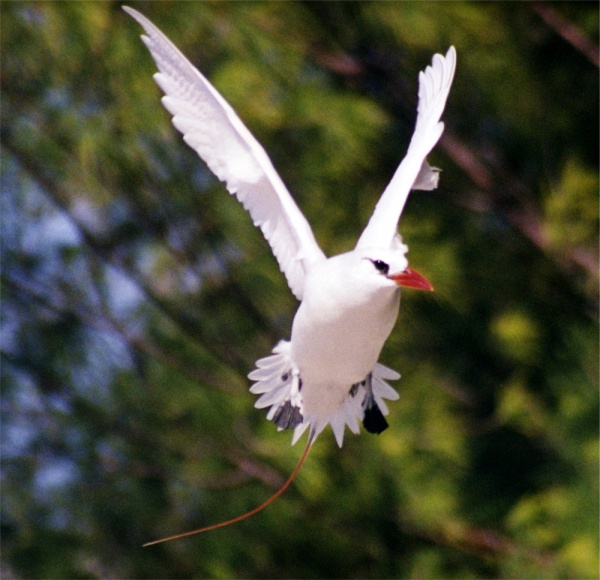Facts About Red-tailed tropicbird
The red-tailed tropicbird is a striking seabird native to the tropical regions of the Indian and Pacific Oceans. First described by Pieter Boddaert in 1783, this bird shares some resemblance to terns but is distinguished by its long, red tail streamers. It predominantly feeds on fish and squid, which it captures by plunge-diving into the ocean.
These birds nest in colonies on remote oceanic islands, with both parents taking turns to incubate their eggs for about six weeks. However, the red-tailed tropicbird faces several challenges due to human activities, including predation by introduced rats and cats.
The classification of the red-tailed tropicbird has a somewhat complex history. Multiple subspecies have been recognized, though their validity remains a topic of debate among experts. Its closest relative is the white-tailed tropicbird. In appearance, the red-tailed tropicbird is a large bird featuring predominantly white plumage, a red bill, and the iconic red tail streamers. Their range includes the southern Indian Ocean and the western and central Pacific Oceans.
During breeding season, these birds form monogamous pairs and nest in colonies on various types of terrain. They are notably territorial and engage in unique courtship displays. The incubation period lasts from 42 to 46 days, with both parents jointly caring for the chick until it is ready to fly.
The red-tailed tropicbird's diet mainly consists of fish and squid. Their foraging strategies vary depending on whether they are incubating eggs or feeding their chick.
Human interactions with the red-tailed tropicbird have been both beneficial and detrimental. Historically, some cultures valued their tail streamers. Currently, the species is listed as "Least Concern" by the IUCN, but in certain areas, their populations are threatened by habitat destruction and introduced predators. Ongoing conservation efforts aim to protect these magnificent birds from further threats.

 Peru
Peru